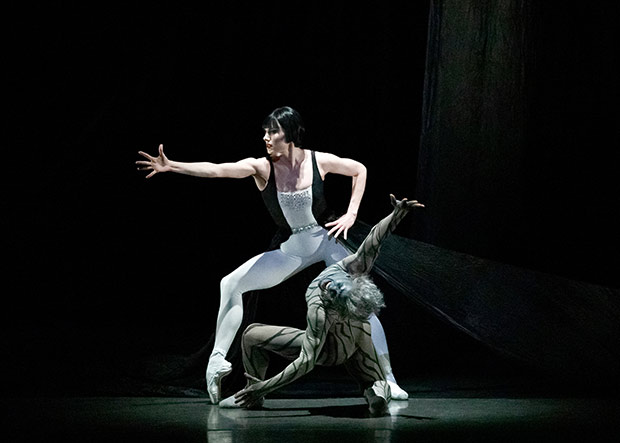
© Erin Baiano. (Click image for larger version)
New York City Ballet
18 Sept, Balanchine + Wheeldon: Raymonda Variations, Variations Pour Une Porte et un Soupir, DGV: Danse à Grande Vitesse
21 Sept: Jewels
★★★★✰
New York, David H. Koch Theater
18, 21 September 2019
www.nycballet.com
davidhkochtheater.com
Pretty in Pink
Summer has ended, as all summers do, and New York City Ballet is back onstage at the Lincoln Center. The first week of their fall season has been devoted to two alternating programs: George Balanchine’s 1967 evening-length triptych Jewels, and a triple bill that combined two dramatically contrasting Balanchine works made thirteen years apart – Raymonda Variations and Variations pour une Porte et un Soupir (1961 and 1974) with Wheeldon’s DGV: Danse à Grande Vitesse.
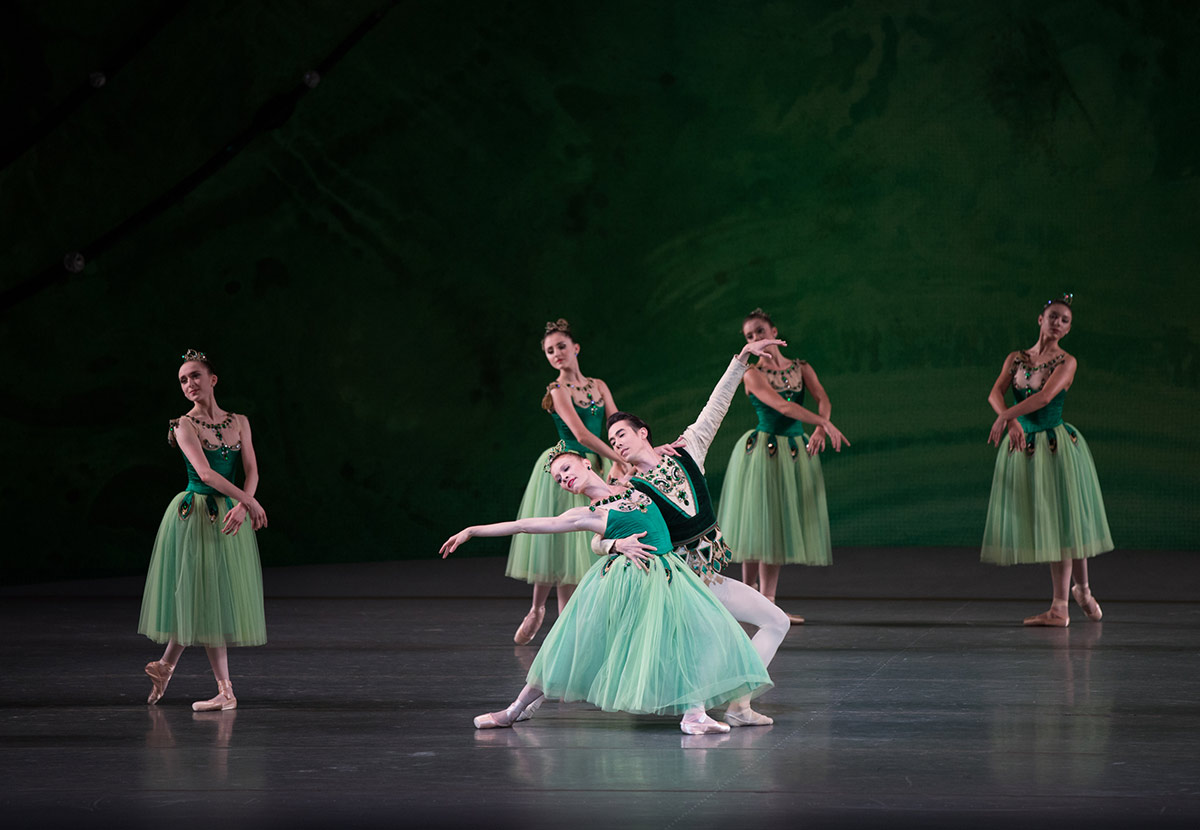
© Rosalie O’Connor. (Click image for larger version)
New York City Ballet has been through a lot in the last two years, with the departure of one director under a cloud of accusations, followed by the firing of three male dancers, the return of one of the three, and the hiring of a new directorial team consisting of Jonathan Stafford and Wendy Whelan, both former principals here. Has the dust settled? From the first week of performances it seems so, though the absence of Tiler Peck and Ashley Laracey, the former due to an injury, the latter to maternity leave, was felt, particularly in the Emeralds section of Jewels. City Ballet currently has no compelling cast in this most delicate of ballets, despite a promising début in the trio by Rachel Hutsell. The two leading female roles, made for Violette Verdy and Mimi Paul, require dancers with strong imaginations, who can flesh out its delicate moods, evoking La Sylphide and the French chansons de geste. The performance I saw on Sept. 18, led by Lauren King and Emilie Gerrity, was well danced but lacked heft, despite a throbbing, focused performance of the Gabriel Fauré score by the New York City Ballet orchestra, under the baton of Andrew Litton. It makes a noticeable difference when Litton, music director of the company, is in the pit; the orchestra has presence and sings, providing a convincing counterpart for the dancing.
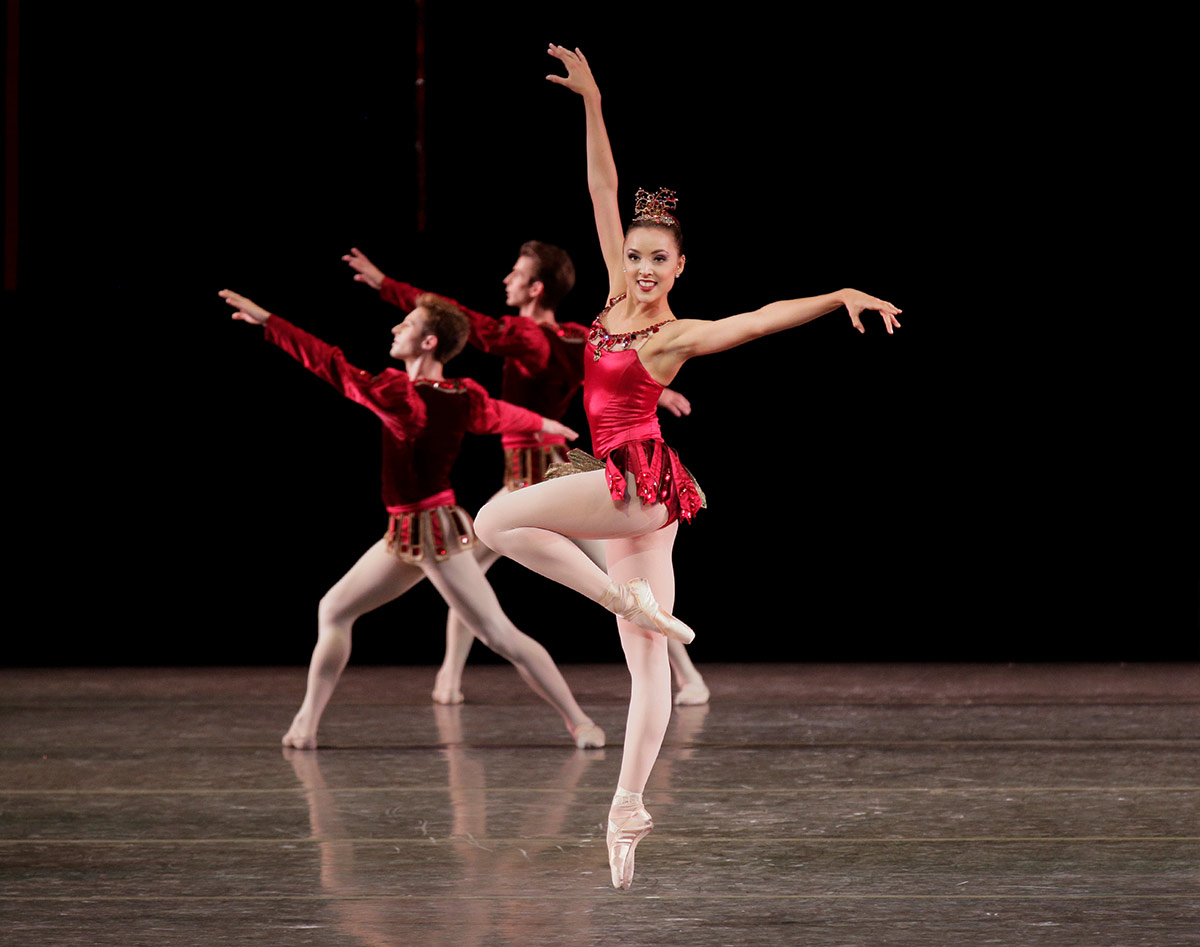
© Paul Kolnik. (Click image for larger version)
The jazzy Rubies has a new master of ceremonies in Emily Kikta, with her long legs, which she wields like javelins. Her take is sportier, less flirtatious than of the cool, stylish, Teresa Reichlen, who has long defined this Amazonian role. She towers over the four men who attach themselves to her hands and legs during the opening section, tossing them away like a cat who has tired of its toys. In the playful pas de deux, full of tango steps and witty hip shakes, Sterling Hyltin was her usual coltish self, leaping and turning at warp speed. Season after season, Hyltin never falters. Andrew Veyette partnered her adroitly but danced with more push than finesse. The evening closed with a powerful rendition of Diamonds, with both Sara Mearns and Russell Janzen in crystalline shape. Janzen’s partnering is so light-handed he gives the impression that Mearns is doing everything on her own. And yet he doesn’t disappear; his quiet ardor is essential to the drama of the piece. Mearns, cooler and more composed than usual, appeared to glide through space, as if suspended in a dream.
Raymonda Variations, which opened the second program, is one of Balanchine’s prettier concoctions, a suite set to music from the 1898 Petipa ballet Raymonda. The tutus, by Karinska, are very pink – with the exception of the main couple, who are in blue – and the backdrop (originally for Lilac Garden) a woozy, post-card landscape. The score offers Alexander Glazunov at his most glittery and Hollywoodian. It’s one of Balanchine’s most conventional works, but with the right ballerina it can really sparkle. In its signature move, the woman dives headlong into the man’s arms, as if into a swimming pool. It has found just the right ballerina in Megan Fairchild, whose dancing has only gained in playfulness and freedom since her return last season. Fairchild seemed to be having a marvelous time, bending the music, lingering in poses, applying a playful rubato to her upper body, skimming the stage with her pin-prick steps. She polished off a series of increasingly-quick grand pas de chats – in which the first leg to leave the ground is held out like an arrow – with energy and propulsion to spare. Anthony Huxley too has super-precise legs and feet, essential in a role in which he has to skim the stage like a hummingbird beating its wings. But the two lack chemistry, and Huxley projects little personality, which robs the role of flash. Ashley Hod and Emily Kikta stood out in the devilishly hard suite of women’s solos – peppered with tricky hops on pointe, turns with the free leg going out and in, or turns in which the supporting leg bends at the most awkward moment – that fill out the ballet.

© Erin Baiano. (Click image for larger version)
No two ballets could be more different than Raymonda Variations and Variations Pour un Porte et un Soupir, Balanchine’s foray into musique concrete (produced by the composer Pierre Henry through the creaking of hinges, breathing, and electronic pings) and avant-gardiste dance. Two characters take turns responding to the music’s squeaks and sighs. The woman wears a white unitard attached to a black cape that fills the stage; he is a Pierrot-like figure covered in body paint, hair teased like Edward Scissorhands. To the sounds of the creaky door, she bends and hinges from the waist and at the elbows like a sexy automaton. He flops around helpless as an ectoplasm. Mouth agape and arms extended, he calls out into the darkness with a silent scream, like the Prodigal Son. No-one comes to his rescue. Finally, with an insect-like indifference, she engulfs him in her giant cape, which is manipulated by invisible strings to make it look like a vast rippling black ocean. Sara Mearns tore into the role with her characteristic hunger, gleefully contorting herself into sharp, poisonous-looking angles or walking on all fours, en pointe. Ulbricht moves with boneless, fish-like liquidity. Whether it’s meant to be tongue-in-cheek or serious – I change my mind every five minutes – there’s no question that the piece works on its own terms. Though it does go on for a bit too long.
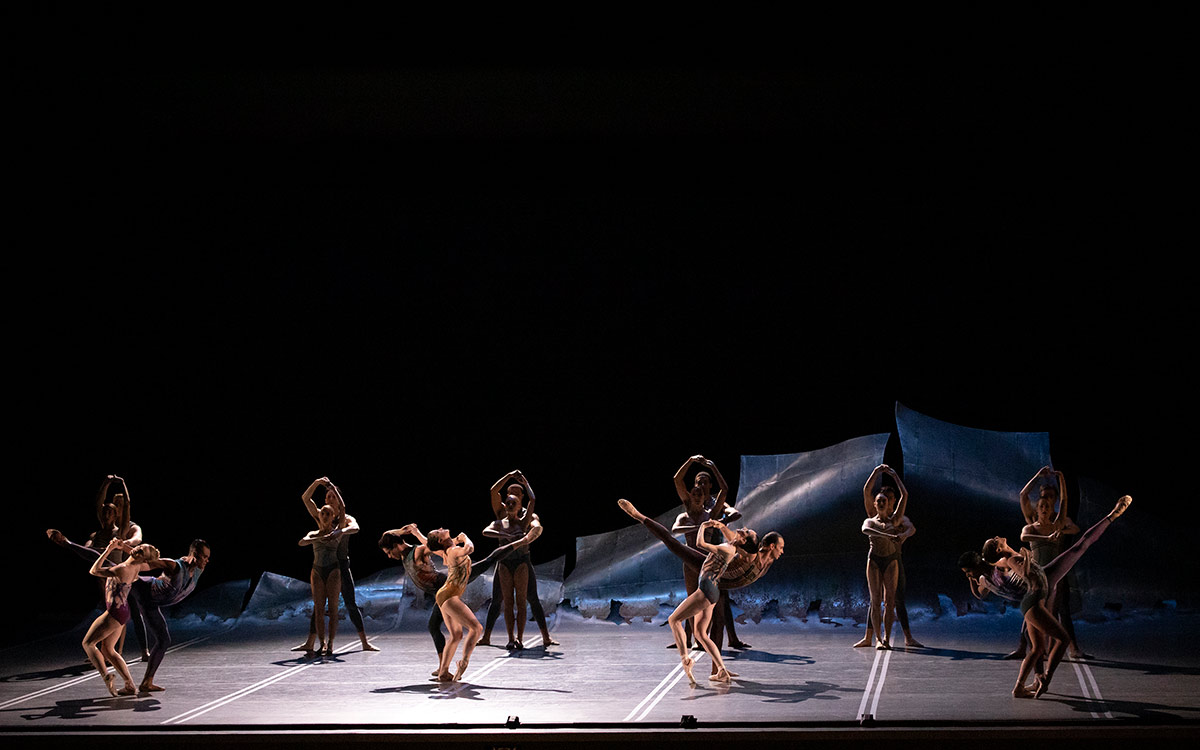
© Erin Baiano. (Click image for larger version)
What does it say about a work when it feels dated despite being the newest thing on the program, by several decades? Wheeldon’s DGV, made in 2006 for the Royal Ballet, is a tribute to the speed and power of the French TGV train. It gestures at speed, with a chugging score by Michael Nyman and a chic metallic set by Jean-Marc Puissant that suggests a bullet train careening into the station. The large cast moves in a sculptural mass, arms and legs evoking spokes in a well-oiled machine. Everything is smooth and fluid. And yet, despite the surface gleam, and excellent dancing by the four lead couples and large ensemble, the ballet lacks momentum. The dancers’ interlocking bodies seem to spin in a neverending loop, like the music.
The ballet offered a first glimpse of Jovani Furlan, a new addition to the male roster from Miami City Ballet. With his energetic presence and vivid face, Furlan brings a much-needed infusion of dynamism to the company. Let’s hope we get to see him soon in a ballet where he can really break free.














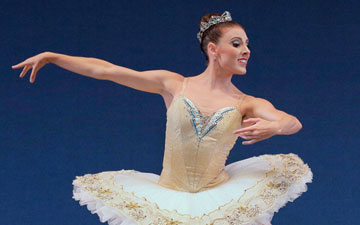
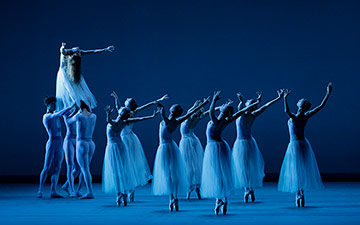

So good to read your reviews again – such well-honed energy and insight.